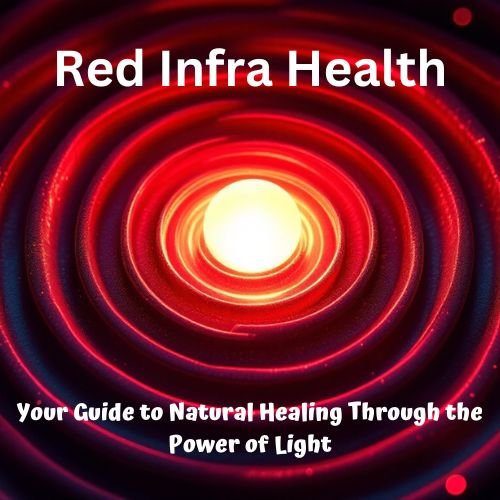Near-infrared (NIR) light penetrates your bones deeply because it operates in a special wavelength range of 650-1,200 nanometers, known as the optical window. At these wavelengths, your blood, skin, and water absorb very little of the light energy, allowing it to travel further into your tissues. When NIR light hits your bones, it encounters less scattering and absorption compared to other light types, especially at wavelengths between 700-900nm. Your bone tissue's unique molecular structure lets NIR light bypass surface barriers and reach depths of up to 40mm. Understanding these mechanics reveals even more fascinating benefits for bone health and regeneration.
Understanding Near-Infrared Light Basics

Near-infrared (NIR) light occupies a sweet spot in the electromagnetic spectrum between 800 nm and 2,500 nm, with an ideal range of 650 nm to 1,200 nm for deep tissue penetration. This range is known as the optical window, and it's where NIR light can bypass barriers like skin, blood, and bone to reach deep structures in your body.
What makes this window so special is how your body's tissues interact with light at these wavelengths. At shorter wavelengths, blood absorbs most of the light energy, while at longer wavelengths, water becomes the main absorber. But within the NIR window, you'll find the perfect balance where light can travel deeper into your tissues.
In fact, this range triggers the strongest mitochondrial response compared to any other part of the electromagnetic spectrum. The primary mechanism involves cytochrome c oxidase, which acts as the main photoacceptor for NIR light.
The most effective wavelengths for brain penetration are between 800-850 nm, with 810 nm showing the highest penetration capability. This is why technologies like near-infrared spectroscopy (NIRS) can effectively image your brain by detecting changes in blood hemoglobin concentrations through your skull.
Bone Tissue Light Absorption
When light waves encounter bone tissue, they undergo complex interactions that determine their penetration depth and effectiveness. Your bones absorb and scatter light differently depending on their structure and the wavelength you're using.
Near-infrared light, particularly in the 700-1000nm range, penetrates bone tissue more effectively because it has a lower absorption coefficient compared to visible light. The separation distance between the light source and detector influences how deeply photons can travel into the tissue.
You'll find that bone tissue follows the modified Beer-Lambert law, which helps explain how light absorption changes based on the concentrations of oxygenated and deoxygenated hemoglobin.
As near-infrared light travels through your bone, it's affected by multiple tissue layers, including skin, fat, and muscle, which all influence its path and penetration depth.
The heterogeneous nature of your bone tissue creates varying patterns of light transport. When photons enter your bone, they don't travel in straight lines but follow scattered paths.
This scattering decreases as wavelengths increase within the therapeutic window, which is why near-infrared light can reach deeper into bone tissue compared to shorter wavelengths.
The absorption and scattering properties of your bone tissue work together to determine how deeply the light can penetrate.
Therapeutic Window for Bone Health

The therapeutic window for treating bone conditions opens up remarkable possibilities through near-infrared light therapy. When NIR light penetrates your bones, it triggers multiple healing mechanisms that can enhance bone density, accelerate healing, and combat bone-related diseases.
You'll find that this therapeutic approach works particularly well because it stimulates collagen production and promotes osteoblast activity, which are essential for maintaining healthy bones. Traditional imaging techniques like MRI often require high doses of contrast agents, making NIR a safer alternative for monitoring bone health.
- You can experience enhanced bone healing through NIR therapy's ability to regulate inflammation and promote vascularized bone regeneration, leading to faster recovery times and reduced pain.
- Your bone density may improve substantially as NIR light stimulates bone growth factors and increases osteoblast proliferation while reducing osteoclast activity, creating a favorable environment for bone strengthening.
- You'll benefit from NIR-II light's deeper penetration capabilities, which make it especially effective for treating deep-seated bone conditions and tumors when combined with photothermal therapy.
The therapeutic window's effectiveness is further enhanced when combined with nanoparticles, offering targeted treatment for conditions like osteosarcoma while preserving healthy tissue. This combination of deep penetration and precise targeting makes NIR therapy a powerful tool for bone health.
Mechanisms Behind Deep Penetration
Building on the therapeutic benefits of NIR light for bone health, understanding how this light achieves deep tissue penetration reveals fascinating biological mechanisms.
When NIR light enters your body, its wavelengths between 700-900nm penetrate much deeper than red light, with 808nm NIR reaching depths of 40mm compared to 660nm red light's 21mm penetration.
Your body's tissue structure plays a vital role in NIR penetration. You'll get the best results at sites with thin epidermis, minimal vascular tissue, and high fat-to-muscle ratios, such as your thigh, upper arm, and chest. Under ideal conditions, NIR light can reach several centimeters deep into your tissues.
The biological effects are equally remarkable. As NIR light penetrates your tissues, it interacts with nitrates and enzymes to release nitric oxide, which promotes blood flow and vasodilation. This interaction doesn't just affect the immediate area – local skin irradiation can lead to changes in your circulating blood, creating beneficial systemic effects.
This explains why NIR light therapy shows promise in various clinical applications, from treating acute ischemic stroke to promoting bone healing through minimally invasive procedures.
Benefits for Bone Regeneration

Research points to remarkable benefits of near-infrared light therapy for bone regeneration, backed by extensive studies showing increased collagen deposition and bone mineral density. When near-infrared light penetrates your bones, it triggers multiple healing responses, promoting osteoblastic proliferation and reducing inflammation, which are essential for bone formation and repair.
- You'll experience enhanced bone strength through improved bone structure and increased stress load tolerance, making your bones more resistant to fractures. Near-infrared light therapy also helps preserve vertebrae strength, essential for maintaining spinal health.
- Your body's natural bone regeneration processes get supercharged as the therapy boosts ATP production and cellular energy. This increased energy production, combined with improved blood flow, accelerates healing and reduces inflammation in bone injuries.
- You'll benefit from the therapy's ability to combat bone loss, as it inhibits osteoclast formation and reduces bone resorption. This makes it particularly valuable for managing osteoporosis and other bone density issues, while simultaneously promoting osteogenesis – the essential process of new bone formation.
Frequently Asked Questions
Can Near-Infrared Light Therapy Interfere With Bone Density Scans or Medical Imaging?
You don't need to worry about NIR light therapy interfering with your bone scans or medical imaging. The wavelengths used in therapy are different from those in medical imaging and won't affect your results.
How Long Does Near-Infrared Light Remain Active Within Bone Tissue?
You'll see near-infrared light's immediate activity diminish quickly in bone tissue, but its biological effects can last hours to days through cellular responses and metabolic changes after your treatment session ends.
Does Bone Marrow Density Affect Near-Infrared Light Penetration Effectiveness?
Yes, your bone marrow density affects NIR light penetration – denser marrow creates more resistance, while less dense marrow allows for better penetration. You'll get more effective NIR treatment with lower bone marrow density.
Are There Age-Related Limitations for Near-Infrared Bone Treatment?
Yes, your age can limit NIR bone treatment's effectiveness. You'll face challenges like reduced bone density and blood flow as you age, which may require adjusted dosages and longer treatment sessions for ideal results.
Can Near-Infrared Therapy Affect Bone Mineral Absorption From Dietary Supplements?
No, near-infrared therapy won't directly affect how you absorb bone minerals from supplements. While it can improve your bone metabolism and healing, it doesn't influence the way your body processes dietary supplements.
In Summary
Near-infrared light penetrates deeply into your bones because you're made of tissues that don't strongly absorb these specific wavelengths. You'll find that this "therapeutic window" of light passes through your skin, fat, and muscle with minimal scattering. When you use near-infrared therapy, it's reaching your bones effectively because your body's molecules interact less with these wavelengths, allowing for deeper penetration and potential healing benefits.





Leave a Reply